
The deadlift effectively targets the lower back.1 If after a challenging deadlift session, your lower back feels excessively sore, painful, or significantly more sore than other muscles like the glutes and hamstrings, there might be an issue.
The reason this is a cause of concern is because the lower back should not take on much of the load or undergo sheer forces when deadlifts are performed with good form.
A sore lower back after deadlifting could mean a number of things but more often than not, it means the lifters’ core wasn’t tight and rigid. Therefore, lifters need to do this – either correct the movement by engaging the core or seek professional such as a physical therapist.
That being said, we’ll cover even more reasons why someone’s back may be sorer than expected, what form queues can help, how to distinguish pain from soreness, and when to seek professional help.
Deadlifts & Their Impact on Lower Back Muscles
The deadlift is a superior kinetic chain compound and hip hinge movement that uses either a barbell and/or dumbbell targeting muscles of the posterior chain and the back muscles—lower back muscles included.2
The posterior chain is composed of muscles that cover the backside.
They include the latissimus dorsi (lats), erector spinae (muscles that coat the spine), gluteus maximus and hamstrings.
In addition to these muscles, the upper back muscles (rhomboids and trapezius) and lower back muscles (erector Spinae, multifidus and sacrospinalis) are also demanded from and utilized. The erector spinae (muscles that line the spine) function as the extensors in the movement and the deeper abdominals work as the flexors.
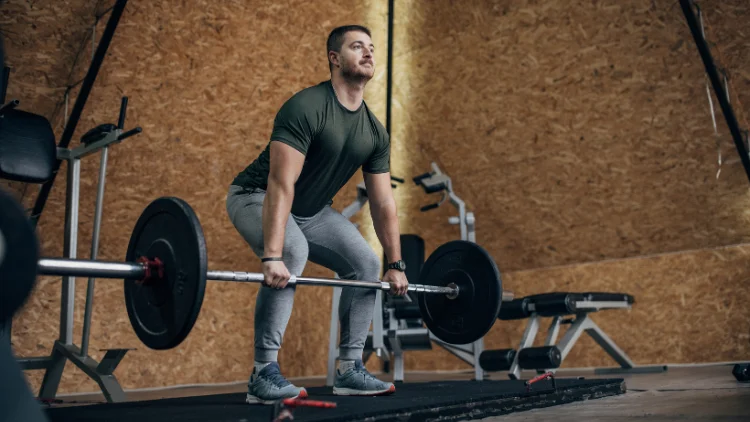
Source: Hirurg via Canva.com3
When performed with proper form, deadlifts effectively engage the lower back. Deadlifting is a demanding exercise that places significant mechanical stress on the lumbar spine, situated between the hips and the ribs. Beginners, in particular, often experience soreness after their initial deadlift sessions, which is a common occurrence.
The spinal extensor muscles of the lower back function to stabilize the body during the movement, but they are not supposed to carry all the load—more demand is supposed to be placed on the bigger muscles such as the hamstrings and glutes to handle the weight.
Anatomy Lower & Upper Back Muscles That Are Worked During Deadlifts
Deadlifts are not categorized as a back exercise per se, and are typically not solely used to grow the muscles of the back, but the back muscles are a very important contributor to the movement by helping stabilize the lifter’s hold on the barbell.
The back muscles that contribute to this stabilization include muscles of the upper back such as the traps and lower back muscles such as the erector spinae.
It should be noted that the upper back muscles do not work in their full range of motion (extend to which a muscle/and or joint can move in a plane) but rather work in an isometric manner where they are statically contracting. However, muscles of the lower back, and especially the erector spinae do work within a full ROM.
Lower Back Muscles (Erector Spinae, Multifidus, Sacrospinalis)
Muscles of the lower back, predominantly the erector spinae provide stability to the torso allowing the other major muscle groups to carry the load.
Upper Back Muscles (Rhomboids, Trapezius)
The rhomboids comprise muscles of the upper and inner back muscles and also line the lower neck. The trapezius (traps) are positioned at the back of the shoulders and together with the rhomboids have the important function of supporting the shoulders.
When lifters deadlift with good form, they retract and pull their shoulders back placing less stress on the joint.
This also prevents the back from rounding ensuring only compressional forces rather than shearing forces are placed on the spine. The spine was designed and is excellent at handling compressional forces; shearing forces (perpendicular to the spine) due to flexion will cause injury such as bulging and herniated discs over time.4
Latissimus Dorsi (Lats)
Lats are the dominant of the back muscles in terms of size, and are critical to the deadlift because they help the lifter maintain the bar in close proximity to the torso, which is an important cue to maintain good form in the deadlift.
This cue allows the correct muscles to be used in the movement rather than stabilizing muscles that take over when the bar veers away from the body.
Are Deadlifts Good or Bad for Your Lower Back?
In spite of popular belief and myth that deadlifts are bad for lower back and that it is the price lifters must pay for deadlifting, the opposite is quite true. Deadlifts are very good for the lower back but only if the movement is done with correct form.
On the contrary, studies and evidence shows that when deadlifts are included in an exercise routine, they are a clinically effective option to treat lower back pain both for functional outcomes and pain scores.5
Additionally, as per a 2021 study, clinicians are strongly recommended to prescribe 12-16 weeks of posterior chain exercises such as the deadlift for lower back pain to maximize outcomes of patients with chronic low back pain.6
Many times, beginners will feel pain when deadlifting but only because their lower back muscles need to get stronger for the movement. Lifters should engage the core and keep their back straight among other cues discussed below to ensure that their lower backs remain safe when deadlifting.
Deadlift Variations & the Muscles Emphasized
Different deadlift variations produce different activations in the typical muscles worked by the conventional deadlift which include:
- The Posterior Chain Muscles—Glutes, lats and erector spinae.
- Back Muscles—Traps and rhomboids.
- Core Muscles—Rectus abdominis, transversus abdominis, external obliques and internal obliques.
- Leg Muscles— Hamstrings, quads, inner thighs, adductors (external rotator muscles) and calves.
- Shoulder Muscles— Medial deltoids, posterior deltoids and rotator cuffs.
- Arm Muscles—Forearms.
Lifters who have bothersome pain can try other deadlift variations that place less stress on the lower back such as sumo and trap bar deadlifts.
Variants such as the trap bar deadlift engage the quads as one of the trap bar deadlift muscles worked much more the conventional deadlift, while having a more diminished lower back role, making it ideal for those with lower back issues.
They may also perform the conventional and sumo deadlift from a higher position known as deficit deadlifts.
When performed in different variations, the deadlift targets various muscle groups. This table provides a summary of the muscles emphasized across different deadlift variants.
Deadlift Variation | Muscles Emphasized |
Conventional deadlift | Glutes, calves, hamstrings, erector spinae, lats, and rear shoulder muscles. |
Sumo deadlift | Quads, glutes, hamstrings and adductors |
Trap bar deadlift | Quads, glutes, hamstrings, erector spinae, traps and upper back |
Dumbbell Romanian deadlift | Erector spinae, gluteus maximus, hamstrings and adductors |
Single leg deadlift | Hamstrings, gluteus maximus and the core |
Stiff legged deadlift | Hamstrings and lower back |
While some deadlifts emphasize different muscles, they all work the same muscle groups and for a visual aid, the images below highlight the different muscles used during all deadlifts variations.
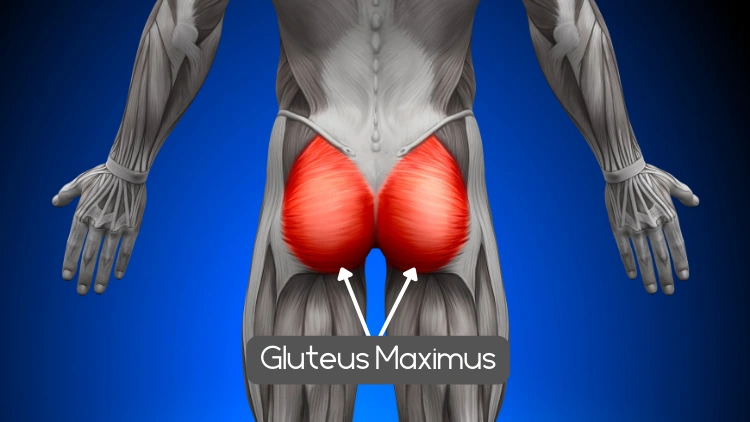
Source: decade3d via Canva.com7
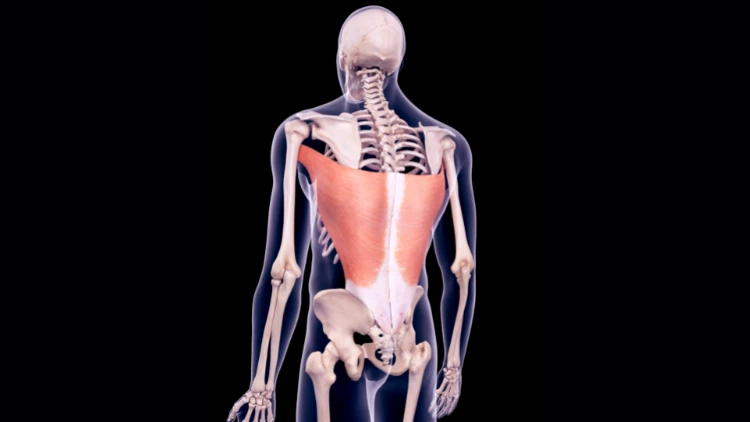
Source: Science Photo Library via Canva.com8

Source: Hank Grebe via Canva.com9
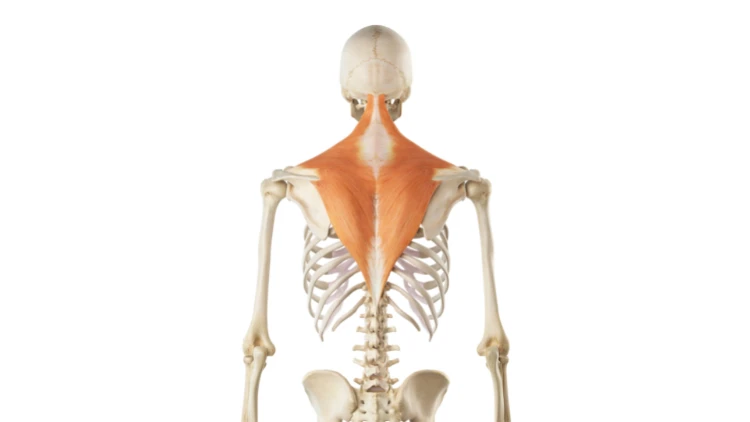
Source: Science Photo Library via Canva.com10
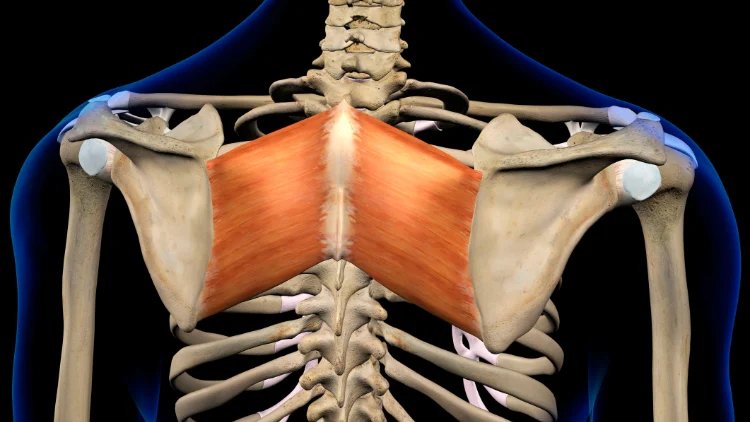
Source: Hank Grebe via Canva.com11
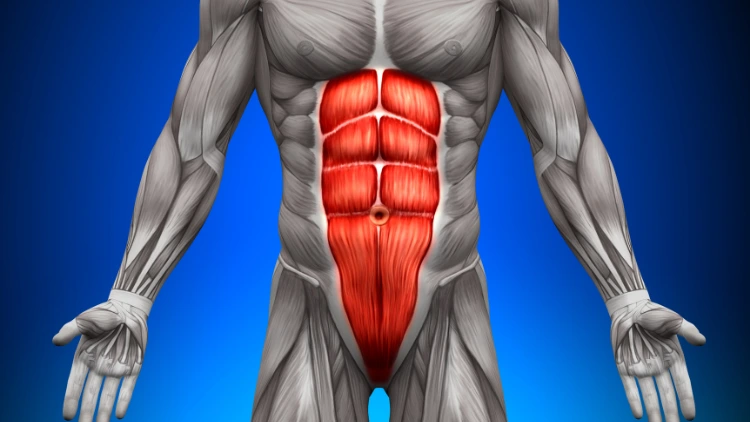
Source: decade3d via Canva.com12
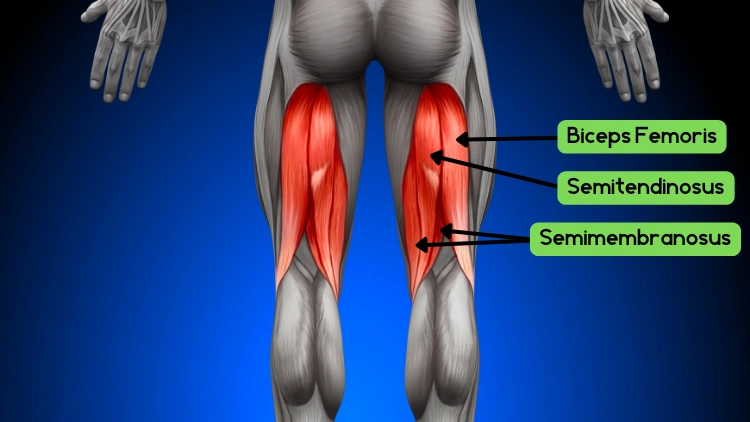
Source: decade3d via Canva.com13

janulla via Canva.com14
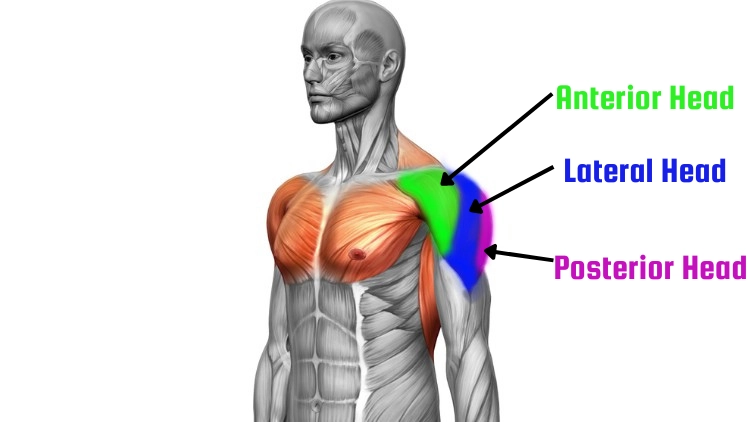
Source: Science Photo Library via Canva.com15
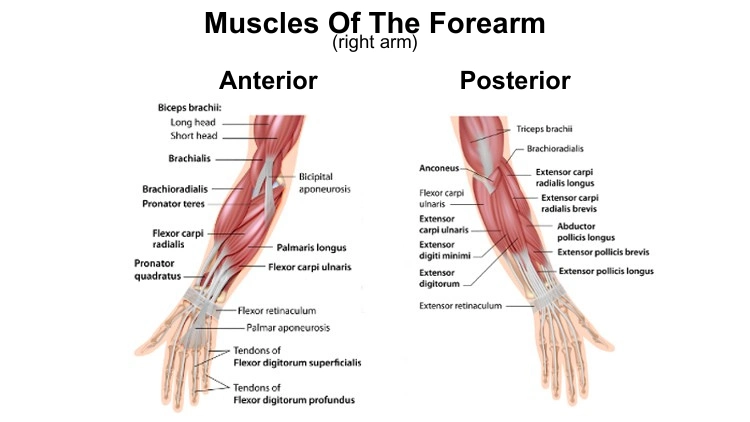
Source: Alila Medical Media on Shutterstock16
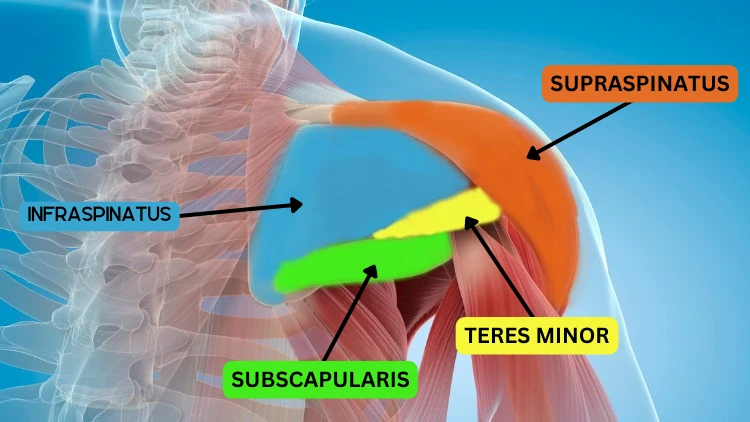
Source: Science Photo Library via Canva.com17
Why Do Some Lifters Have a Sore Lower Back After Deadlifting?
There are two reasons why lifters may feel sore in the lower back after a deadlift workout; they may be beginners to the movement and hence their lower backs are not accustomed to the stress that it receives during the workouts.
If performed incorrectly, deadlifts can strain the lower back. Experienced lifters may also experience soreness in their lower backs after a deadlift session, typically due to improper form causing the back to round during the movement.
This places additional stress to the lower back to carry weight that is not supposed to be loaded onto it.
There are a number of common mistakes including not engaging the core muscles that lifters do that leads to this which will be delved into below.
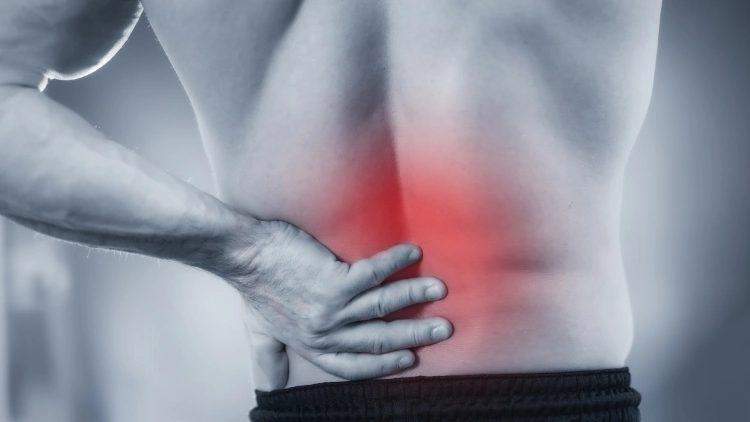
Source: microgen via Canva.com18
There are also other times when lifters have soreness and/or pain in one side of the lower back compared to the other. This is due to having a dominant side which someone naturally favors to carry more of the load as they would for either their right or left hand.
Weakness in one side is compensated by the stronger side typically when the weight is too heavy. To cure this, use weight that is appropriate and do not ‘ego lift’.
Are Deadlifts Safe To Perform When You’re Experiencing Mild Lower Back Pain?
This may be surprising to many, but deadlifts are actually safe to perform when experiencing mild lower back pain.
Lower back pain happens to be the most prevalent musculoskeletal condition in the United States, affecting close to 90% of the population, most cases of the chronic condition usually resolves in just over a month.19
There are a number of reasons individuals should continue to lift when they have lower back pain, with moderation of course.
Deadlifts Strengthen the Spinal Muscles, Bones and Tendons—The human body is able to withstand impressive loads and force and therefore the best way to make it strong is to make it adapt to these forces.
Deadlifts place an enormous amount of force that makes both the lower and upper back muscles, bones and tendons adapt and get stronger.
More often than not, a strong back will seldom succumb to pain.
Effective Deadlifts Enhance Glute and Hamstring Development—Frequent lower back pain among lifters is often accompanied by minimal soreness in their glutes and hamstrings, which is the target area for deadlifts. Proper execution of the deadlift should not overly emphasize the spine or hips, but rather induce some leg soreness with minimal strain on the back.
Stronger hip and gluteal musculature will increase the lifter’s ability to tolerate load leaving the lower back will little to bear.
Deadlifts Are Good for the Long Run—In the long term, deadlifts will make the lower and upper back more functional and experience less pain even when individuals age. They have been scientifically proven to do so, good form withstanding.
Starting deadlifting early is beneficial for those curious about whether deadlifting stunts growth, as it lays the foundation for young individuals to develop stronger bodies that will age well.
Is Low Back Pain While Deadlifting Normal?
What is thought to be mild lower back pain and/ or stiffness is fairly normal while deadlifting because the lower back carries some of the load. Along with the core, the lower backs purpose is to provide stabilization while bigger muscles bear most of the load.
However, there is a different in having a stiff and tight lower back vs actual lower back pain. If there is a sharp, burning or tingling sensation, then stop immediately since this is a red flag. But if the “pain” is more so extreme soreness, which can be perceived as pain, then stop deadlifting that day and don’t deadlift again until the soreness subsides entirely.
The lower back muscles will get acquainted once you become accustomed to the movement. As long as the lower back isn’t put into flexion (a rounded lower back) and you keep a stiff core, you shouldn’t experience this extreme soreness for long.
Excessive and recurring low back pain is not normal even for novice lifters who have perhaps completed deadlift workout powerlifting programs. Lower back pain may also surface with experienced lifters who are deadlifting with good form but this should not be the norm.
The likely culprit is that they have suddenly increased their load of what their bodies are used to rather than gradually doing so.
If a lifter is having severe low back pain either during or after the deadlift, then it is an implication that they are doing the deadlift with incorrect form and are making some mistakes such as not engaging the core or having the bar too far from the body.
Address These Deadlifting Mistakes To Avoid Lower Back Injuries
There are several ways to prevent the back from hurting when deadlifting and some common mistakes that lead to lower back pain—avoiding these mistakes will also help prevent potential injury to the spine and allow for a safer deadlift.
These include not engaging the core muscles, having a rounded back and overextending at the top.
Knees Not Bent Enough
The deadlift is a hip hinge (bending of the body downwards and in half) movement at its core and when the knees are not bent enough and/or overbent during the hip hinge, additional load will be placed on the lower back and hamstrings, with the glutes having a diminished role.
Lifters should master the hip hinge to allow the glutes and hamstrings to handle the majority of the load during the deadlift.
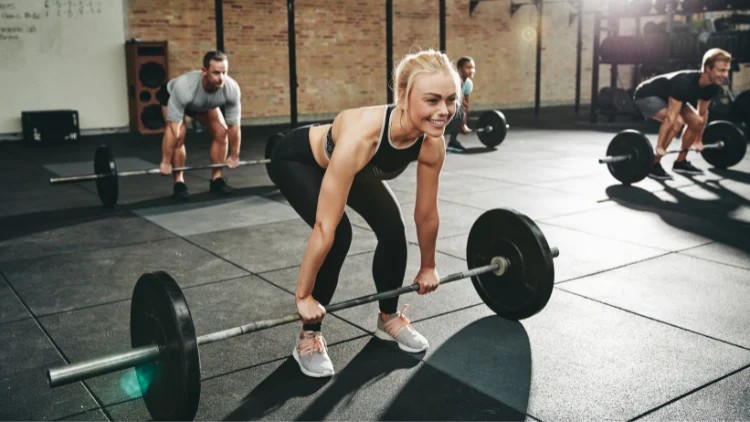
Source: StefanDahl via Canva.com20
Not Engaging the Core Muscles
One of the biggest reasons when deadlifts are hurting lower back muscles and making them sore during and after the deadlift is a failure to engage the core muscles at beginning and throughout the movement.
The core muscles are one of the muscle groups that are heavily engaged and utilized in the movement providing stability to the spine and keeping the torso firm and stable.
By engaging the core, the bar can follow an ideal vertical path, akin to the squat bar path that remains perpendicular, ensuring the bar stays close to the body throughout the lift. The core muscles will additionally prevent lifters from hyperextending their spines at the top phase when the hips are extending.
Lifters should fully exhale and engage the core before beginning the deadlift.
Also, when attempting to lower the weight back, lifters may be tempted to let gravity take over and have an uncontrolled drop of the weight. This can knock the body out of place as the shoulders are hunched, straining the lower back.
They should hip hinge the weight back to the floor.
The deadlift is an effective exercise for developing core muscles and strength and will harden muscles of the core as a result of utilizing them in the movement and by doing so, lifters will prevent lower back pain.21
Having a Rounded Back
Rounding the back is an error that is rampant and common with beginners unfamiliar with deadlift technique and some novice lifters who started deadlifting wrong.22
Rounding of the back is a result of the shoulders not being retracted and not having the rhomboids and traps engaged typically due to weight that is just too heavy.
This places additional stress on the lower back. The spine must remain neutral and straight through the lift.
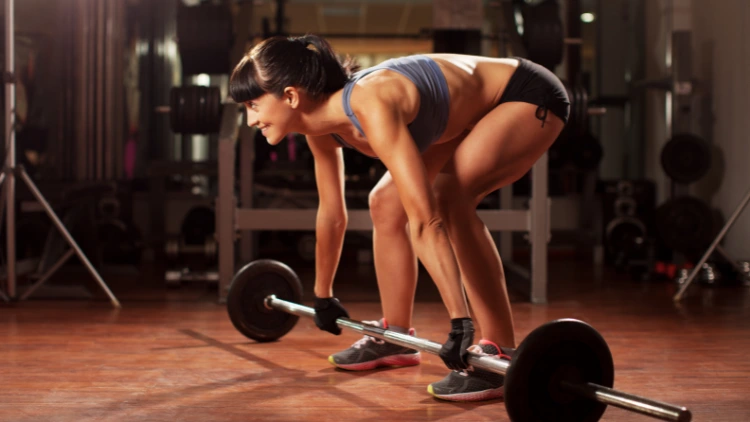
Source: miljko via Canva.com23
It should be noted that sometimes for powerlifters who are lifting heavy loads (like attempting a maximal load) and those with longer torso and proportionally shorter arms, some rounding is allowed. However, this applies to the mid back, known as thoracic flexion when they push the shoulders forward to reduce the overall ROM and thus create the most efficient position.
This does not apply to the lower back where a neutral position must be maintained.
Arching the Lower Back
Sometimes athletes rightly know that it is wrong to round their backs during the deadlift, they therefore arch their lower backs in an attempt to prevent this instead of allowing the natural lumbar shape of the lower back.
This places them at a mechanical disadvantage making the lift even more difficult and places stress on the lower back contributing to soreness in the lower back.
Overextending at the Top
When lifters are at the top phase during lockout, they will mistakenly overextend their backs in an attempt to lockout the bar. This is incorrect as it places stress on the lower back. Instead, they should squeeze their glutes during the lockout when attempting a hip thrust kind of maneuver.
Bar Being Too Far Away From the Body
When the barbell is too far away from the body, it is not traveling in an optimal path and is a sign that the lats are not properly engaged.
If the lats are not engaged even before the lift, there is not enough tension being created and when there is a transfer of force between the lower body to upper body as the bar rises, the bar may drift away from the body and/or rounding of the back.
It also means that the glutes and hamstrings can’t perform their intended function. The barbell should be close to the shins as it travels upwards for an efficient bar path.
Looking Up During the Deadlift
Lifters sometimes look upwards when they are deadlifting. This prevents the back of the head to be aligned with the spine which may place stress on the lower back.
Instead, they should look down on the ground and keep the chin tucked as they set up to commence the lift.
Not Starting at a Dead Stop
After the first couple of reps, many lifters will tend to bounce the bar off the floor to make the contraction and pull up easier. Rather than wait a second at the floor, they perform what is known as a ‘stop-and-go’ rep—this bouncing of the weight off the floor places additional stress on the lower back.
Ego Lifting
Even after a lifter has mastered the deadlift and the hip hinge, it does not give them a free pass to embark on deadlift heavy immediately.
When lifting heavy weights during deadlifts, the lower back is indeed engaged. However, it’s important to implement a gradual, progressive loading approach to enable the muscles, bones, and tendons to adapt and strengthen, even though heavy deadlifts are crucial for developing robust posterior chain and back muscles.
When the posterior chain muscles are strong, there is an improvement to overall health of the body.
Seeking Professional Help For Persistent Lower Back Pain Cause by Deadlifting
Oftentimes, lifters may still experience lower back pain when deadlifting even after mastering the technique, using appropriate weight and have been doing it for some time. Individuals should not despair and think of giving up—do this instead and take certain steps like seeing a medical professional if the pain is severe, consult with a trainer or switch to different variations if the pain is bothersome.
Seeing a Medical Professional
There may be an underlying problem with the spine and/or muscles that is causing the lower back pain to not go away.
When the lower back pain is so severe that it is limiting everyday activities, then individuals should seek medical advice from their GP to get some imaging done or even seek a spine specialist to find the root cause of the problem.
However, they should be weary if back surgery is the recommended course of action. Many times, surgery may make the problem worse and make the road to recovery almost impossible, or worse, cause disability. The human body has an amazing way to heal itself if guided correctly towards doing so.
Fitness enthusiasts should read up on the “Back Mechanic” by Stuart McGill before committing to surgery. It is available on Amazon for $35.
Consult a Professional Trainer
Lifters should consult a professional trainer when the lower back hurts from deadlifts and if pain persists and is mostly bothersome, because it is quite possible that technique is lacking even if someone feels they have mastered it.
A professional trainer can observe a lifter’s technique and help them make the necessary corrections.
Many lifters who wonder if deadlifts effectively target the lower back should understand that they do engage and activate those muscles. However, they only do so to a certain extent, primarily focusing on stabilizing the spine. If lifters experience persistent or chronic lower back pain during or after deadlifting, it indicates incorrect form. In such cases, lifters should focus on using proper form techniques or consult a medical professional to prevent lower back pain from becoming a recurring problem.
Frequently Asked Questions
Are Deadlifts a Back or Leg Exercise?
By definition and due to the muscles that deadlifts primarily engage through ranges of motion which are the leg muscles, the deadlift is categorized as a leg exercise. However, it does activate muscles of the upper and lower back that are engaged in the stabilization of the torso through the movement. It can therefore be considered both a back and leg exercise.
Deadlifts vs Squats: Which Is Better for Lower Back Workout?
Both deadlifts and back squats focus on the lower back muscles. However, deadlifts place a greater emphasis on engaging and strengthening the lower back compared to squats. Therefore, it’s feasible for lifters to incorporate a squat and deadlift same-day regimen, provided that the intensity of one of the exercises, particularly the deadlift, is moderated.
Does the Deadlift Primarily Target the Lower Back Muscles or the Legs?
The lower back acts to stabilize the spine and while it does activate the lower back, the legs get more of a workout, particularly the hamstrings, quads and glutes.
How Many Times a Week Should Lifters Deadlift?
Deadlifts can be done anywhere between 1-3 times a week provided that there is time for recovery. It also depends on the level of training of the lifter whether they are a beginner or advanced.
Do Deadlifts Give Thick Back Muscles?
Deadlifts are excellent at building back strength by helping keep the spine neutral, but on their own cannot give thick back muscles as they don’t put the back muscles through a full ROM. Pulling exercises such as barbell rows and chin ups should be added to an exercise program.
Which Muscles Should Be Sore After a Deadlift Workout?
Mostly the lower leg muscles which are the hamstrings, quads and glutes. Nevertheless, there may be some stiffness in the lower back especially if there is a progressive overload of weights.
Which Exercises Work the Lower Back?
There are a number of exercises that work the lower back and these include deadlift variations which include the rack pull. Hip hinge movements will also work the lower back such as bent over rows and good mornings.
Other examples of lower back workouts include back extensions, bird dogs, superman, Russian kettlebell swings and glute hamstrings raises.
Can Deadlifts Hurt Your Back?
Deadlift can hurt a lifter’s back when done repeatedly with incorrect form. However, when done with correct proper technique, they should not hurt the back muscles.
References
1Maridav. “Gym Fitness Weightlifting Deadlift Man Bodybuilding Powerlifting.” Canva. Accessed 27 April 2023. <https://www.canva.com/photos/MAEmKvPAir8-gym-fitness-weightlifting-deadlift-man-bodybuilding-powerlifting/>
2Isabel Martín-Fuentes, J. M.-L. (2020, February 27). Electromyographic activity in deadlift exercise and its variants. A systematic review. Retrieved 2023, from <https://www.ncbi.nlm.nih.gov/pmc/articles/PMC7046193/>
3Hirurg. “Weightlifting practice.” Canva, 20 April 2019. Accessed 13 April 2023. <https://www.canva.com/photos/MAFbr6qRuqY-weightlifting-practice/>
4J P Callaghan, S. M. (2001, January). Intervertebral disc herniation: studies on a porcine model exposed to highly repetitive flexion/extension motion with compressive force. Retrieved 2023, from <https://pubmed.ncbi.nlm.nih.gov/11114441/>
5Samuel C Fischer, D. Q. (2021, February). Effect of an Exercise Program That Includes Deadlifts on Low Back Pain. Retrieved 2023, from <https://pubmed.ncbi.nlm.nih.gov/33626500>
6Nicholas Tataryn, V. S. (2021, March 8). Posterior-Chain Resistance Training Compared to General Exercise and Walking Programmes for the Treatment of Chronic Low Back Pain in the General Population: A Systematic Review and Meta-Analysis. Retrieved 2023, from <https://www.ncbi.nlm.nih.gov/pmc/articles/PMC7940464/>
7decade3d. “Gluteus Maximus – Anatomy Muscles.” Canva. Accessed 12 April 2023. <https://www.canva.com/photos/MADerAJvWMU-gluteus-maximus-anatomy-muscles/>
8Science Photo Library. “F017/1255.” Canva, 20 April 2019. Accessed 13 April 2023. <https://www.canva.com/photos/MADq3vbyn-k-f017-1255/>
9Hank Grebe. “Male Erector Spinae Back Muscles in Isolation on Skeleton.” Canva. Accessed 12 April 2023. <https://www.canva.com/photos/MAD8-XkZ3xQ-male-erector-spinae-back-muscles-in-isolation-on-skeleton/>
10Science Photo Library. “”Human trapezius muscles.” Canva. Accessed 13 April 2023. <https://www.canva.com/photos/MADmTLHptgU--human-trapezius-muscles/>
11Hank Grebe. “Male Rhomboid Major Back Muscles in Isolation on Skeleton.” Canva. Accessed 15 April 2023. <https://www.canva.com/photos/MAD9YMm5tt4-male-rhomboid-major-back-muscles-in-isolation-on-skeleton/>
12decade3d. “Abs – Anatomy Muscles.” Canva. Accessed 12 April 2023. <https://www.canva.com/photos/MADerFwn3js-abs-anatomy-muscles/>
13decade3d. “Hamstrings – Anatomy Muscles.” Canva. Accessed 15 April 2023. <https://www.canva.com/photos/MADerMxdfBI-hamstrings-anatomy-muscles/>
14janulla. Canva. Accessed 20 April 2023. <https://www.canva.com/photos/MADE-Sq7uLk-quadriceps-female-anatomy/>
15Science Photo Library. “The muscles involved in standing biceps curl. The stabilizing muscles are highlighted.” Canva. Accessed 12 April 2023. <https://www.canva.com/photos/MADmTGwAFbo-the-muscles-involved-in-standing-biceps-curl-the-stabilizing-muscles-are-highlighted-/>
16“Muscles Forearm Anterior Posterior View Stock Illustration 147943889.” Shutterstock. Accessed 19 April 2023. <https://www.shutterstock.com/image-illustration/muscles-forearm-anterior-posterior-view-147943889>
17Science Photo Library. “”Shoulder muscles.” Canva. Accessed 12 April 2023. <https://www.canva.com/photos/MADmTDg8VA4--shoulder-muscles/>
18microgen. “Lower Back Pain.” Canva. Accessed 27 April 2023. <https://www.canva.com/photos/MADm1DXjhew-lower-back-pain/>
19Massimo Allegri, S. M. (2016, October 11). Mechanisms of low back pain: a guide for diagnosis and therapy. Retrieved 2023, from <https://www.ncbi.nlm.nih.gov/pmc/articles/PMC4926733/>
20StefanDahl. “Fit Young Woman Weightlifting during a Gym Class.” Canva, 20 April 2019. Accessed 13 April 2023. <https://www.canva.com/photos/MADcv9uGe_0-fit-young-woman-weightlifting-during-a-gym-class/>
21Juan C Colado, C. P.-M.-M. (2011, November). The progression of paraspinal muscle recruitment intensity in localized and global strength training exercises is not based on instability alone. Retrieved 2023, from <https://pubmed.ncbi.nlm.nih.gov/22032222/>
22Academy, A. F. (2017, January 18). DEADLIFT TECHNIQUE AND TEACHING POINTS. Retrieved 2023, from <https://www.fitnesseducation.edu.au/blog/education/barbell-deadlift-teaching-points-and-proper-technique/>
23miljko. “Woman doing exercise deadlift in fitnes club.” Canva. Accessed 27 April 2023. <https://www.canva.com/photos/MAEJKmoI68k-woman-doing-exercise-deadlift-in-fitnes-club/>